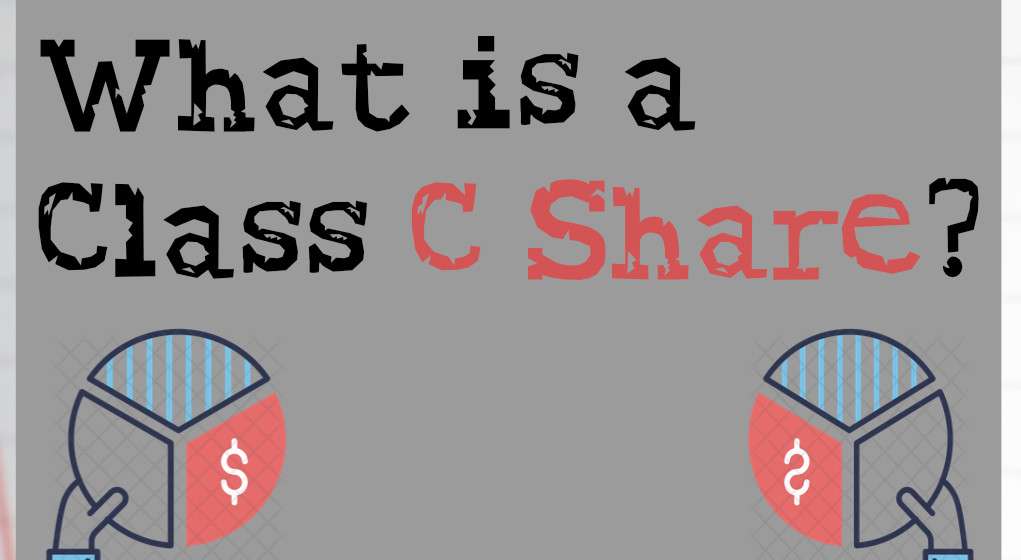Class C shares are a class of mutual fund share characterized by a level load that includes annual charges for fund marketing, distribution, and servicing, set at a fixed percentage. These fees amount to a commission for the firm or individual helping the investor decide on which fund to own. The fees are charged annually.
In comparison, a front-end load carries charges paid when the shares are bought and a back-end load assesses charges when the investor sells shares; and no-load funds contain no commission charges at all, with the fees simply calculated into the net asset value (NAV) of the fund.
KEY TAKEAWAYS
- Class-C mutual fund shares charge a level sales load set as fixed percentage assessed each year.
- This can be contrasted with front-load shares that charge investors at time of purchase and back-end loads that charge at time of sale.
- Because the annual fee can compound investor cost over time, this class of fund is best-suited for those looking to hold fund shares for periods of 3 years or less.
The Basics of Class C Shares
Compared to other mutual fund share classes, class C shares often have lower expense ratios than class B shares. However, they have higher expense ratios than class A shares. Expense ratios are the overall annual management costs of running a mutual fund. As a result, Class C shares may be a good option for investors with a relatively short-term horizon, who plan to keep the mutual fund for just a few years.
The ongoing charges that constitute the C-share level load are officially known as 12b-1 fees, named from a section of the Investment Company Act of 1940. Total 12b-1 fees are capped at 1% annually. In this 1% fee, distribution and marketing expenses can be up to 0.75%, while service fees max out at 0.25%. Although designated for marketing, the 12b-1 fee primarily serves to reward intermediaries who sell a fund’s shares. In a sense, it’s a commission paid by the investor to the mutual fund every year, instead of a transactional one.
Other mutual fund share classes come with 12b-1 fees too but to different degrees. Those fees charged to class A shares usually are lower, compensating for the high upfront commissions this category pays. C-shares tend always to pay the maximum 1% and, since 12b-1 fees figure into the mutual fund’s overall expense ratio, their presence can push that annual expense ratio above 2% for the class C-shareholder.
Unlike A-shares, class C shares do not have front-end loads, but they often carry small back-end loads, officially known as a contingent deferred sales charge (CDSC), just as class B shares carry. However, these loads for C shares are much smaller, typically only around 1%, and they usually vanish once the investor has held the mutual fund for a year.
Pros
- No upfront commission—entire deposit is invested
- No back-end sales charge after one year
- Good intermediate-term (1-3 years) investment
Cons
- High expense ratios
- Back-end load on first-year withdrawals
- Not good for a buy-and-hold strategy
Who Should Invest in Class C Shares?
Because of the back-end load charged on short-term redemptions, investors who plan to withdraw funds within a year may want to avoid C-shares. On the other hand, the higher ongoing expenses associated with C-shares make them a less-than-ideal option for long-term investors.
The differences in final values of investments with varying fees can be immense when held for a substantial period—say, in a retirement fund. For instance, take a $50,000 investment in a fund that returns 6% and charges annual operating fees of 2.25%, that is held for 30 years. The final amount the investor will receive will equal $145,093.83. A fund with the same amount invested and the same annual returns, but with yearly operating fees of 0.45% will offer the investor significantly more, with a final value of $250,832.55.
Class C shares would work best for investors planning to keep the fund for a limited, intermediate period, optimally more than one year but less than three. That way, you hold on long enough to avoid the CDSC, but not so long that the high expense ratio will take a major toll on the fund’s overall return.
Real World Example of Class C Shares
The Calamos Growth Fund is an example of a fund with both class A and class C shares. The class A shares charge an expense ratio of 1.40%. Of this amount, 0.25% is a 12b-1 fee. They have a maximum of 4.75% front-end load that decreases based on the amount that is invested. The fund’s class C shares don’t have a front-end load, but they carry a maximum 1% CDSC on shares held less than one year. The class C shares also impose the maximum 1% 12b-1 fee, pushing the fund’s overall expense ratio to 2.15%.




